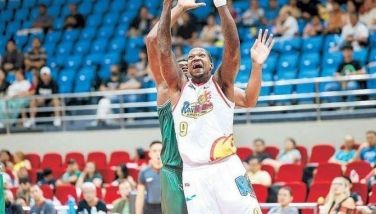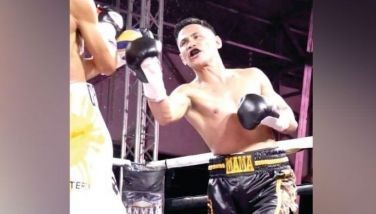Underscoring role of sports in schools
In less than two months, schools and colleges under the traditional two-semester academic year will be opening their gates to students to start school year 2012-13. The start of the academic year signals the beginning of collegiate sports competitions all over the country such as the University Athletic Association of the Philippines and the National Collegiate Athletic Association.
The start of collegiate sports should prompt private and government educators and education authorities like DepEd and CHED and other stakeholders in the field of sports and physical education to ask fundamental questions about the reason why we have sports programs in schools to begin with. Sports and physical education have traditionally been given scant attention even by so-called enlightened administrators for reasons like “sport is just fun and games that do not require intellectual and cerebral intervention and have little to do with national development.”
James Michener, in his book, “Sports in America” adds more insights into the discussion by stating in chapter three (Sports and Health), “I have never seen a statement of philosophy issued by the physical education department of any school, college or university which failed to state that the promotion of good health was a major goal of its program, but I have observed many such programs in operation in which little regard was paid to the health of the student body or even of the major participants. In sports there is almost as many as empty philosophizing about health as there is about character-building.”
Physical education and athletic department programs of schools generally consist of two halves. As Michener states, to satisfy the public’s hunger for sports entertainment, schools and colleges choose a few exceptional athletes from among the student body and field the most proficient teams possible. They play rivals from other institutions, records are kept, and champions crowned. Boys and girls who are far above average move in orderly fashion from (grade school) to high school, then to college and from college to elite/Olympic sports and to professional teams. This half is under the direction of the school’s athletic department and focuses on developing skills and engaging in contests. As can be seen, this component is well organized and well supported, very often by alumni boosters.
The second half, the PE part, is, in Michener’s words, less conspicuous but more important. It would provide exercise and playing experience for the vast majority of students who have no special athletic skills but who need the beneficial results of exercise just as much as the athletes do. Ideally, each student should also receive instruction in health practices, in diet, in the formulation of long-range health programs and in general hygiene. Special emphasis should be placed on those sports which could be used throughout a lifetime. This branch of the program is under the direction of the school’s (PE) department and focuses on the future life of the individual. This half is poorly administered in most schools (both in America and the Philippines).
Michener states that in an average high school (in the US) of 2,000 students, it is now easy for 1,800 to graduate without ever having contemplated the health problems they will be living with for the next half-century, and there is little chance that they will become familiar with exercise programs that would enable them to live longer and operate more effectively.
And, Michener continues, even the fortunate 200 with enough athletic ability to attract the attention of coaches leave school with little comprehension of how to maintain their personal health. Emphasis is almost solely upon competition and the perfecting of skills that will be rarely used after graduation. Participation is in those complicated team sports which provide minimal long-range health benefits.
What worsens the situation according to Michener is while those fortunate 200 are being undereducated insofar as health is concerned, the less fortunate 1.800 receive a really deficient health education. A winning team becomes a substitute for a general system of health education, and in the long run, everyone suffers.
Like many frustrated with how PE has taken a back seat in a school’s curriculum development, Michener says he sees “little practical hope that our (US) educational system can be converted into an agency for the improvement of national health. School administrations, athletic departments and even PE teachers are so indoctrinated with the concept of fielding semi-professional teams as the goal of education that attention to the health of the student body is impossible. The educators are not to blame; it is our society that demands a team first, health second. And it seems apparent that society will continue to make the same demand throughout the foreseeable future.”
Next week, we ask what are the dangers of overemphasizing competitive games benefitting a minority rather than the health of the majority in our schools?
- Latest
- Trending































